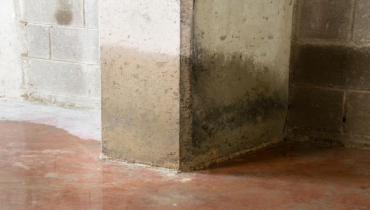After a basement flood, proper floor cleaning is crucial to prevent damage and health risks. Rainbow Restoration recommends:
|
Cleaning Your Floor After a Basement Flood
A leaky pipe, a sewer system backup, unseasonably heavy rains—any one of these issues can result in a flooded basement. But no matter what caused the flooding, it’s important to get everything cleaned up as soon as possible. The longer water sits on your floor, the more likely it will develop into a hazardous situation. At best, flood water can cause a dirty cleanup job and the smell of mildew. At worst, it could develop into bacterial contamination, mold growth, and rotting wood. Fortunately, you can help prevent the worst effects of flooding by knowing when it’s safe to do the cleanup yourself and when it’s best to bring in the professionals.
Removing the Water
If the flooding is extensive, the flood water is contaminated, or there’s any shock danger from electrical outlets or appliances, make sure you call professionals like Rainbow Restoration immediately to safely deal with the problem. In situations where there’s only a small amount of clean water—from burst pipes or an overflowing bathtub—and the area is safe, you can begin the drying and cleanup process on your own.
Start by removing as much water as possible with towels, a pump, or a wet-dry vacuum. If your basement has floor drains, use a squeegee to get rid of the water. Once most of the water is removed, you can start cleaning the floor. The type of floor covering in your basement will help determine what kind of cleaning method is best.
Cleaning Concrete or Tile Floors
If your basement has concrete or tile floors, you’re in luck. They’re the easiest to clean and usually have the best outcome when exposed to water. Start cleaning your concrete or tile floors by drying them as quickly as possible to minimize the growth of mold and mildew. If the weather’s warm and fair, opening doors and windows will speed up evaporation and allow the moisture to flow outside. Because concrete and tile floors don’t shrink when dried quickly like wood, it’s safe to use a fan or dehumidifier to help speed up the drying process. Once the floor is completely dry, use an all-purpose cleaner with bleach and a clean mop to disinfect the floor and prevent the development of bacterial growth and any persistent odor.
Cleaning Carpeted Floors
Since carpet is very absorbent, it’s important to dry a wet, carpeted floor as quickly as possible. If the carpet in only partially wet, because of a leak or overflow, start by moving furniture away from the wet area. Then cover the wet area with some dry, absorbent towels and let them soak up all the excess moisture. Apply pressure or walk on the towels to help them soak up as much water as possible, replacing them as they become saturated. Once most of the water has been removed, clean and rinse the carpet with an extraction cleaner (also known as a steam cleaner). When you’re finished cleaning, open windows and use fans, or your HVAC system to help dry the carpet faster.
If the carpet is saturated due to more serious flooding, renting a high-powered fan or a dehumidifier may not be enough to remove the excess moisture as quickly as is needed to avoid contamination. If you suspect the padding and subfloor under your carpet are soaked, you’ll need to call a professional to determine the best course of action.
Related Topic: Should Carpet Be Replaced After Water Damage? Maybe Not.
Cleaning Wood Floors
Dealing with water on wood floors can be trickier than other materials. First, factors like the type of wood, the type of subfloor, and the relative humidity in the air can all affect how wood dries. Second, while it’s tempting to use heaters to speed up the drying process, using them can cause wood to dry too fast and encourage warping. Luckily, if the water can be removed quickly, the rest of your cleanup should be a little easier. Once the wood is dry, clean it with an oil soap cleanser and use a wood floor polish to restore its luster.
If your wood floor is saturated by water, it’s at a greater risk of developing mold—which is not a do-it-yourself cleanup. Pros like Rainbow Restoration use a comprehensive process for quick drying wood floors that minimizes the risk of damage and helps prevent the development of mold.
Tips to Stop Further Damage:
- Immediately stop the source of water
- Call Rainbow Restoration
- When possible, protect furniture legs and bases by placing plastic or foil to keep water from making contact.
- Raise the bottoms of draperies two feet from the floor
- Pick up all small contents, newspapers, magazines, plant pots, and metal goods to prevent further damage.
Choosing a Professional Restoration Company
When your basement floor gets wet, it can cause anything from an annoying minor cleanup job to major problems like staining, warping, or mold. To make sure little or no damage happens to your floors, call a professional restoration and carpet cleaning service right away. You can trust the restoration pros at Rainbow Restoration to assess your water damage and help you prevent damage to floors by performing cleanup jobs that are too big for you to handle on your own.

